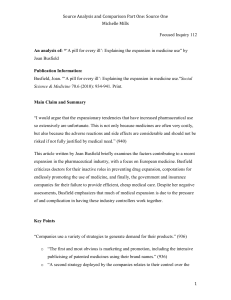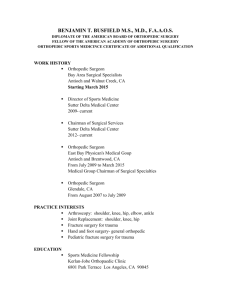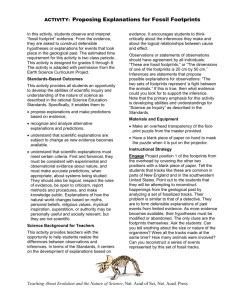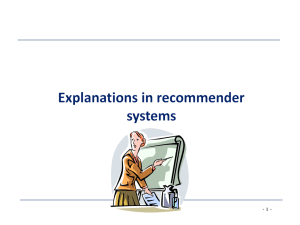The Physical Environment and Health
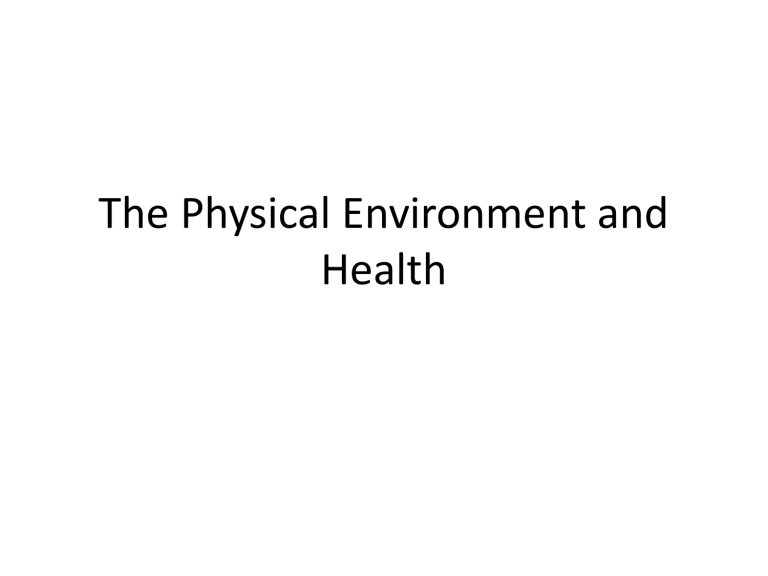
The Physical Environment and
Health
Session Aims
• To explore some of the key physical environmental influences on health
• To critique some of the key physical environmental factors influencing health drawing on current research and debate
• To understand the extent the physical environment in which we experience our live influences our health
Factors of the Physical Environment
• Agriculture and food production,
• Water and sanitation,
• Housing,
• The working environment,
• Employment,
• Education,
• Healthcare services
(*Note that this is not an exhaustive list)
Lalonde’s Health Field concept
Proposes that health can be improved by addressing four different factors:
1. individual lifestyles,
2. health services,
3. human biology/genetics
4. environmental influences.
Busfield’s Typology of Health and
Illness
• Type 1 – Explanations to do with individual behaviour
• Type 2 – Explanations to do with individual attributes and circumstances
• Type 3 – Explanations to do with the material environment and allocation of resources
• Type 4 – Explanations to do with social relationships and human subjectivity
Busfield’s Type 3
According to Busfield’s typology:
• Our material environment and the way that resources are allocated and distributed have a significant impact on health.
• These factors are influenced by the way that society is organised politically and economically (Busfield, 2000).
Food and Agriculture
• Over/under-consumption
• Availability of food
• Types of food
• Production processes
• Manufacturing
• Distribution
• Politics and economics
Water and Sanitation
• Access to clean water & adequate sanitation is key to good health
• ‘Water problems’
- contamination,
- deficits and shortages,
- safety
- distribution
- links to agriculture & food production
Housing and Health
• Housing and health are linked
• Issues:
– Overcrowding
– Damp and cold
– Poor quality
– Homelessness/temporary accommodation (link to poorer mental health)
– Growth of urban slums (migration into cities)
Work environment and health
Three ways in which the working environment can impact on health:
• Working patterns
• Physical working environment
• Psycho-social impact
Working Patterns:
• Irregular shift patterns are detrimental to health (physical and mental)
Why?
- Disruption to sleep patterns
- Patterns of unhealthy behaviour associated with working shifts
- Stress
(Scott, 2000; Knutsson, 2003)
Physical Working Environment:
• ‘Sick Building Syndrome’ (symptoms caused by the condition of the building worked in)
• Impacts on health - reduces productivity and increases absenteeism (Epstein, 2008)
• Whitehall Studies – low levels of work demand, control and support associated with higher rates of absence (North et al, 1996)
• Impact of temporary and permanent employment – latter is better for health
(Aronsson et al, 2002)
Unemployment and health
• Being unemployed is detrimental to health (Lin et al, 1995)
• Causal link between unemployment and adverse health outcomes (many factors might contribute to this)
• Stewart (2001) – people who are unemployed experience higher death rates than people who are employed.
• Unemployment causes increased financial pressure and increases individual vulnerability to other life events (Kessler et al, 2009)
Education and health
• There is a positive association between education and health (higher levels of education lead to better health experience)
• Ross and Wu (1995) offer 3 explanations for this:
– Work and economic conditions
– Social-psychological resources
– Lifestyle
The more educated you are, the more likely you are to:
- work full time in fulfilling, subjectively rewarding work
- report a sense of control over your life and your health and greater levels of social support
- reject health-damaging practices such as smoking and take up health enhancing practices
Healthcare services and health
• The availability and accessibility of healthcare has a huge impact on health.
• For example, maternal and infant health varies considerably according to the income of a country.
• In the UK – ‘Post Code Lottery’ (label used to describe relative differences in the provision of healthcare related to geographic location)
• The physical environment (our living and working conditions) has a large part to play in our experiences of health (Donaldson and
Scally 2009),
• There are many other factors of our living and working conditions which impact on health.
• Different environmental factors may interact with each other to influence health (Green and Tones, 2010),
Additional factors?
• natural and manmade disasters,
• climate change (Macdonald, 2006),
• out-door air pollution (Donaldson and Scally,
2009),
• solid waste disposal (Leonardi et al, 2005)
• transport
• It is important to consider factors within the physical environment and how these can influence health and health experience.
• Identifying environmental factors affecting health can help to address them and potentially make a real difference to health outcomes
• This can also influence health policy, how fiscal decisions are made and resource-allocation to improve health
Summary
• There are many aspects of the physical environment which impact on health and health experience throughout life through our living and working conditions.
• Research into these factors, and the impact of them, is challenging because whilst positive relationships and associations can be demonstrated, the causal mechanisms
(how and why) can be harder to determine.
• The relationship between our living and working conditions and the way that we live our lives is very complex and involves the interaction of a large number of different factors which are hard to separate from each other.
